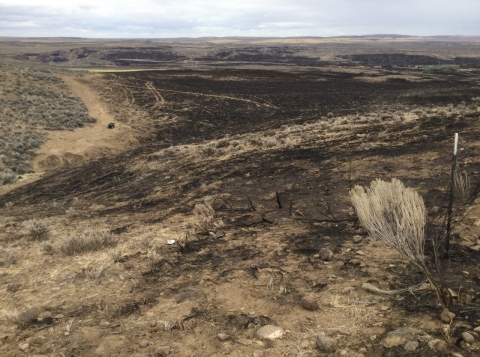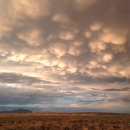Moses Coulee Post-Fire Sage-Steppe Restoration: Phase II
Funding Year | Amount | Location |
FY22 | $183,323 | Douglas County, WA |
Project Description
This project will restore sage-steppe habitat impacted by a wildfire that burned over 3,000 acres in The Nature Conservancy (TNC) Moses Coulee Preserve in Douglas County, Washington. TNC manages over 33,000 acres in the sage-steppe ecosystem on Washington’s Columbia Plateau. TNC’s Moses Coulee Preserves make up one of the largest contiguous areas of functional sagebrush sagebrush
The western United States’ sagebrush country encompasses over 175 million acres of public and private lands. The sagebrush landscape provides many benefits to our rural economies and communities, and it serves as crucial habitat for a diversity of wildlife, including the iconic greater sage-grouse and over 350 other species.
Learn more about sagebrush habitat left in the state. These lands contain large areas of intact sage-steppe plant communities, over 5 miles of riparian riparian
Definition of riparian habitat or riparian areas.
Learn more about riparian systems, and serve as valuable habitat to a host of sagebrush-obligate wildlife species. Wildfires are a major threat to sage-steppe habitat, and their impacts are increasingly becoming more severe. In 2020 large, continuous swaths of wildlife habitat in eastern Washington were devastated by wildfire as 800,000 acres of sage-steppe burned. TNC, along with multiple government agencies, private landowners, and non-governmental organizations, has prioritized post-fire restoration projects on their affected lands.
On TNC’s preserves, the 2020 wildfires burned over 3,700 acres of critical sage-steppe habitat. TNC has committed to restoring these areas, and work started immediately after the fires by spreading Wyoming big sagebrush seed across burned sites. Multiple burned fences were rebuilt with wildlife-friendly specifications, and many stretches of hazardous downed fence wire were removed. TNC also started intensive restoration activities, occurring in two phases at prioritized sites.
In 2021, Pheasants Forever (PF) partnered with TNC and received funding from the U.S. Fish and Wildlife Service to support Phase One restoration tasks on the preserves. This partnership allowed the first phase of contracted work to begin in the fall of 2021 to address the risk of cheatgrass invasion, given its role as a primary driver of wildfires in sage-steppe. Contracted work in this first phase of restoration included invasive plant control and native grass seeding.
Phase Two will include weed control, native tree and shrub planting, and a beaver dam analog project.
Partners
The Nature Conservancy, Pheasants Forever




